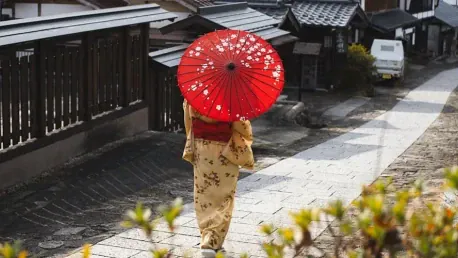Located in the 626 area of Los Angeles County, the San Gabriel Valley (SGV) has undergone a remarkable transformation from a predominantly white suburb to a thriving cultural enclave for Asian immigrants, primarily Chinese. This evolution speaks volumes about the resilience, determination, and commitment to cultural preservation by its residents. Unlike conventional melting pots where assimilation is often inevitable, the SGV stands as a mosaic of diverse traditions and practices, making it a unique haven where heritage is both celebrated and maintained. This enriching ambiance has nurtured a self-sustaining ethnic economy that caters to the cultural and everyday needs of its inhabitants, thereby ensuring that assimilation does not obliterate their cultural identity.
The Evolution of San Gabriel Valley
The journey of the San Gabriel Valley from a white suburban area to an ethnically diverse middle-class region began in the post-World War II era. The demographic shift was catalyzed by the influx of Mexican, Japanese, and Chinese Americans who moved to the area seeking better opportunities and a sense of community. The socio-economic factors driving this migration included the desire for affordable housing and the prospect of establishing roots in a promising community. During the 1960s, the area witnessed a significant increase in the number of Asian immigrants, particularly Chinese, drawn by the burgeoning ethnic economy and reasonable real estate prices. This era marked the onset of SGV’s transformation into an ethnoburb—a suburban area with a high concentration of ethnic businesses and institutions.
The demographic evolution of the SGV was not merely a random occurrence but rather a structured transition driven by the collective aspirations of immigrant communities. As these populations settled, they brought with them rich cultural tapestries that reshaped the socio-cultural landscape of the area. The infusion of different ethnicities laid the foundation for further integration of various Asian communities over the subsequent decades. This metamorphosis resulted in the SGV emerging as a microcosm reflecting the broader multi-ethnic character of Los Angeles. It became a space where different cultural backgrounds meshed harmoniously, fostering an inclusive environment conducive to cultural retention and socio-economic prosperity.
Building a Self-Sustaining Ethnic Economy
Central to the SGV’s cultural preservation is its self-sustaining ethnic economy. This vibrant economy is characterized by an array of Chinese banks, grocery stores, hair salons, language schools, and other businesses that cater to the specific needs of its residents. These establishments are more than mere commercial entities; they serve as cultural cornerstones that help reinforce the community’s identity and heritage. By providing essential services in a culturally familiar context, these businesses create an environment that nurtures the traditions and practices of the residents, ensuring that assimilation into the broader American culture does not come at the expense of losing their cultural roots.
The success of the SGV’s ethnic economy is inextricably linked to the ability of these businesses to strike a balance between cultural retention and integration. For instance, language schools ensure that younger generations can connect with their heritage while also adapting to their new environment. Similarly, traditional grocery stores offer products that resonate with the culinary practices of the community, enabling residents to maintain their dietary customs. This synergy between cultural preservation and adaptation is a defining feature of the SGV, making it a dynamic community that thrives by staying true to its roots while embracing the new opportunities and challenges that come with living in America.
Personal Narratives of Resilience and Rebirth
Personal stories of SGV residents vividly illustrate the resilience and rebirth that characterize the community. One poignant narrative is that of the author’s grandmother, Popo, who migrated from Hong Kong to the SGV in the 1990s amidst personal turmoil. Popo’s experience mirrors that of many immigrants who, despite facing initial isolation and heartbreak, found solace and strength within the SGV’s supportive ethnic enclave. Through the communal bonds and familiar cultural settings, Popo was able to rebuild her life, demonstrating the resilience that is synonymous with the immigrant experience.
These personal narratives highlight the crucial role of community-driven cultural sustenance in the lives of SGV residents. The ethnic enclave provides a linguistic and cultural environment that offers the security and support necessary for immigrants to navigate the challenges of their new lives. The resilience shown by residents like Popo underscores the empowering nature of such communities, where individuals can thrive and find a sense of belonging despite the adversities they face. The stories of rebirth within the SGV serve as a testament to the enduring human spirit and the transformative power of culturally cohesive communities.
Resistance Against Assimilation
Unlike the conventional melting pot ideal, the San Gabriel Valley operates as a mosaic where richly sustained traditions and practices are celebrated rather than diluted. This resistance against cultural assimilation is a distinct form of resilience that allows the community to preserve its heritage while existing within the larger American context. The presence of culturally specific institutions and businesses plays a pivotal role in this resistance, providing a sanctuary where cultural identity can flourish unabated.
The ability of the SGV community to resist the homogenizing pressures of cultural assimilation speaks to its strength and determination. By fostering a self-sustaining ethnic economy and maintaining institutions that cater specifically to their cultural needs, the residents are able to push back against the forces of cultural amalgamation. This strategic resistance not only preserves their cultural identity but also empowers the community to navigate the American socio-cultural landscape on their terms. The SGV thus stands as a beacon of cultural preservation, offering a refuge where assimilation is balanced by a deliberate effort to maintain and celebrate the community’s unique cultural heritage.
Historical Context and Racial Dynamics
The transformation of SGV from a predominantly white suburb to an ethnically diverse community is deeply intertwined with the racial, segregation, and housing rights debates of the postwar era. Asian Americans and Mexican Americans faced considerable racial discrimination, but many managed to settle in areas like Monterey Park due to their financial and social capital. The ability to overcome these barriers and establish roots in SGV underscores the community’s resilience and strategic acumen. Additionally, the systemic exclusion faced by Black Americans adds a layer of complexity to the racial dynamics influencing the settlement patterns in the area.
Understanding the historical context is essential to grasp the full scope of SGV’s transformation. The racial dynamics of the postwar era played a significant role in shaping the community’s development. Despite the challenges posed by racial segregation and discriminatory housing policies, Asian Americans and Mexican Americans were able to carve out a space for themselves in SGV through strategic use of their resources. This historical narrative of resistance and resilience highlights the intricacies involved in the SGV’s evolution, providing a nuanced perspective on the factors that contributed to its current status as a thriving ethnoburb.
Childhood Experiences and Evolving Perspectives
The author’s reflections on childhood experiences in the SGV offer a compelling lens through which to view the evolving perspectives on cultural authenticity and identity. Initially, the cultural authenticity of the SGV was perceived as embarrassingly “too ethnic,” a sentiment that likely stemmed from the pressures of conforming to the broader American culture. However, as the author matured, there came a deeper understanding and appreciation of the profound narratives of resistance and rebirth embedded within these spaces. This shift in perception underscores the importance of such communities in providing empowerment and cultural affirmation.
The evolving perspective of the author highlights the role of the SGV in fostering a sense of belonging and cultural preservation. The initial embarrassment gave way to a recognition of the community’s strength in balancing cultural retention with adaptation. This balance enables residents to assert their cultural identity while navigating their American environment, creating a unique and vibrant space where cultural and individual narratives intersect. The author’s journey of self-discovery and acceptance within the SGV mirrors the broader immigrant experience of finding empowerment through cultural affirmation and community support.
The Role of Ethnoburbs in Cultural Preservation
Nestled in Los Angeles County’s 626 area, the San Gabriel Valley (SGV) has experienced a significant transformation. Once a predominantly white suburb, it has evolved into a vibrant cultural enclave for Asian immigrants, particularly those of Chinese descent. This shift is a testament to the resilience, determination, and commitment of its residents to preserve their cultural identity.
Unlike typical melting pots where assimilation might dilute traditions, the SGV has become a mosaic of varied customs and practices, creating a unique environment where heritage is actively celebrated and maintained. This culturally rich atmosphere has fostered a self-sustaining ethnic economy that not only meets the cultural needs of its people but also addresses their everyday requirements. By doing so, it ensures that the process of assimilation does not erase their distinct cultural identities. The SGV stands out as a living example of how diversity can enrich a community, allowing traditions to thrive and coexist in harmony.









